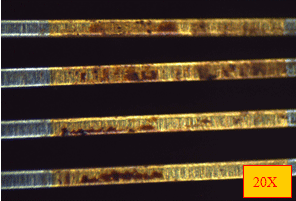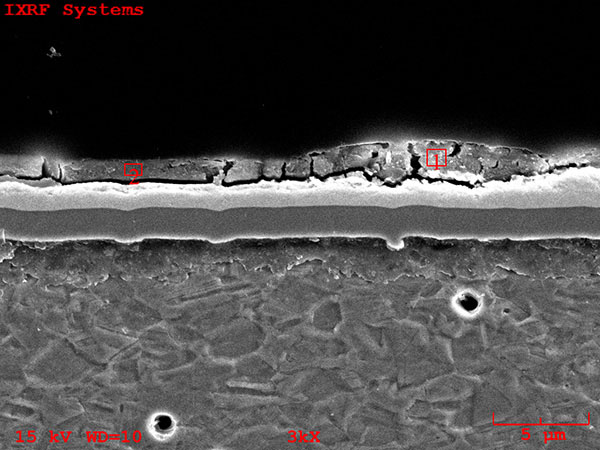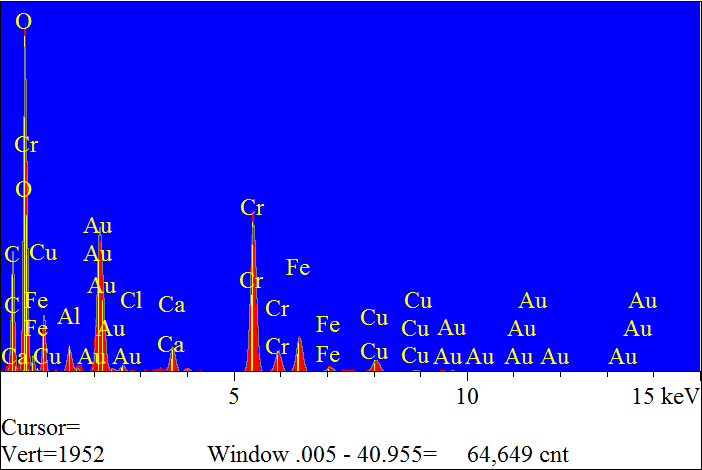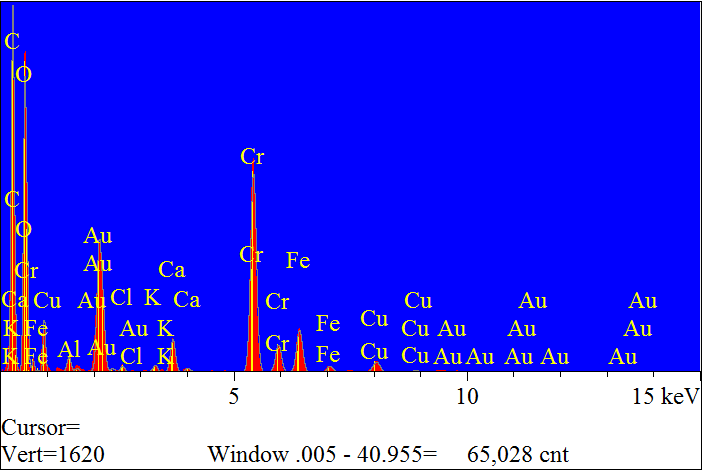- Testing
- Morphology Observation
- Microstructure Analysis
- Surface Element Analysis
- Surface Foreign Body
- Component Analysis
- Mechanical property test
- Thermal Analysis
- Welding Qualification
- CT Scan
- Nondestructive testing
- Cross Section Analysis
- Coating Thickness
- Flame Retardant Test
- Abration Test
- Coating quality inspection
Inorganic Foreign Body Analysis
| Organic Foreign Body Analysis | Inorganic Foreign Body Analysis |
| Unknown Foreign Body Analysis | Product Anomaly Comparative Analysis |
Inorganic foreign body analysis is a kind of analysis method aiming at the inorganic foreign body surface of the product, according to the form, the detection depth and area of the foreign body to choose a particular instrument, analyze their inorganic components and determine the elemental composition and content. Compared to foreign bodies organic and inorganic foreign body show a firmer texture and deeper color, and less light and so on. Analytical methods of inorganic foreign bodies are the following:
| Analysis methods | Typical applications | Characteristics of analysis | The reference standard |
|---|---|---|---|
| Scanning electron microscope and X-ray energy spectrum SEM/EDS | surface microstructure observation; Micron grade size measurement; Micro area composition analysis; Pollutants analysis | Can quickly to do qualitative and quantitative analysis on most of the elements in the micro zone Be ~ U of sample at short analysis time | JY/T 010-1996 GB/T 17359-2012 |
| Time-of-flight secondary ion mass spectrometry (TOF-SIMS) | The surface of the organic material and inorganic material trace analysis; | Excellent dopant and impurity detection sensitivity can detect ppm or lower concentration Depth analysis has good detection limits and Depth Resolution; Analysis of a small area | ASTM E1078-2009 ASTM E1504-2011 ASTM E1829-2009 |
| Dynamic secondary ion mass spectrometry(D - SIMS) | Analysis of product surface tiny foreign body; Analysis of oxidation film thickness; Doping elements content determination | Small area analysis, analyze foreign body composition ≥10 μm diameter; Shallow depth analysis, measurable ≥1nm sample; High limit detection, usually ppm-ppb level | ASTM E1078-2009 ASTM E1504-2011 ASTM E1829-2009 |
| Auger electron spectroscopy (AES) | Defect analysis; Grain size analysis; Depth profile analysis; Film composition analysis | Analysis of surface micro area can be done; Auger element can be obtained directly from the screen. | GB/T 26533-2011 |
| X-ray photoelectron spectroscopy (XPS) | Organic materials, inorganic materials, stains, the surface of the residue analysis; Surface composition and chemical state information; Depth profile analysis | Analysis of thin layer, the analysis of elements is wide, which can analyze the surface element of 1-12 nm and the element content. | GB/T 30704-2014 |
Case analysis:
Case background:
A customer enlarges the product surface and finds red foreign body which affects the product performance.
Testing method:
SEM/EDS analysis
Testing standard:
JY / T 010-1996 General principle of analytical scanning electron microscopy
GB / T 17359-2012 Micro beam analysis spectroscopy quantitative analysis
Introduction of analysis methods:
1.Many red foreign body was found on the product surface through a microscope magnification, see below:


2.Testing the foreign body sample by SEM/EDS to determine the other inorganic components. After Stripping gold processing, plating the surface of sample with Pt for 30s, and then put the sample into the SEM sample room to magnify and observe the testing position and analyze the composition by EDS.
 |
 |
| Spectrum | C | O | Al | K | Cl | Au | Ca | Cr | Fe | Cu | Total |
|---|---|---|---|---|---|---|---|---|---|---|---|
| 1 | 12.77 | 19.38 | 1.54 | / | 0.48 | 12.24 | 2.53 | 30.13 | 11.54 | 9.39 | 100.00 |
| 2 | 26.66 | 15.31 | 0.64 | 0.41 | 0.31 | 7.49 | 2.20 | 30.53 | 10.11 | 6.33 | 100.00 |
3.According to SEM / EDS test results, the main component of foreign body is Cr oxide.
- Learn more
- Qualification and honor
- Contact Us
- Contact Us
MTT Shenzhen
Tel: 400-850-4050
Fax: 0755-2782 1672
Email: marketing@mttlab.com
MTT Suzhou
Tel: 400-118-1002
Fax: 0512-6275 9537
Email: marketing@mttlab.com
MTT Shanghai
Tel: 400-118-1002
Email: marketing@mttlab.com
MTT Dongguan
Tel: 400-116-1002
Email:marketing@mttlab.com
